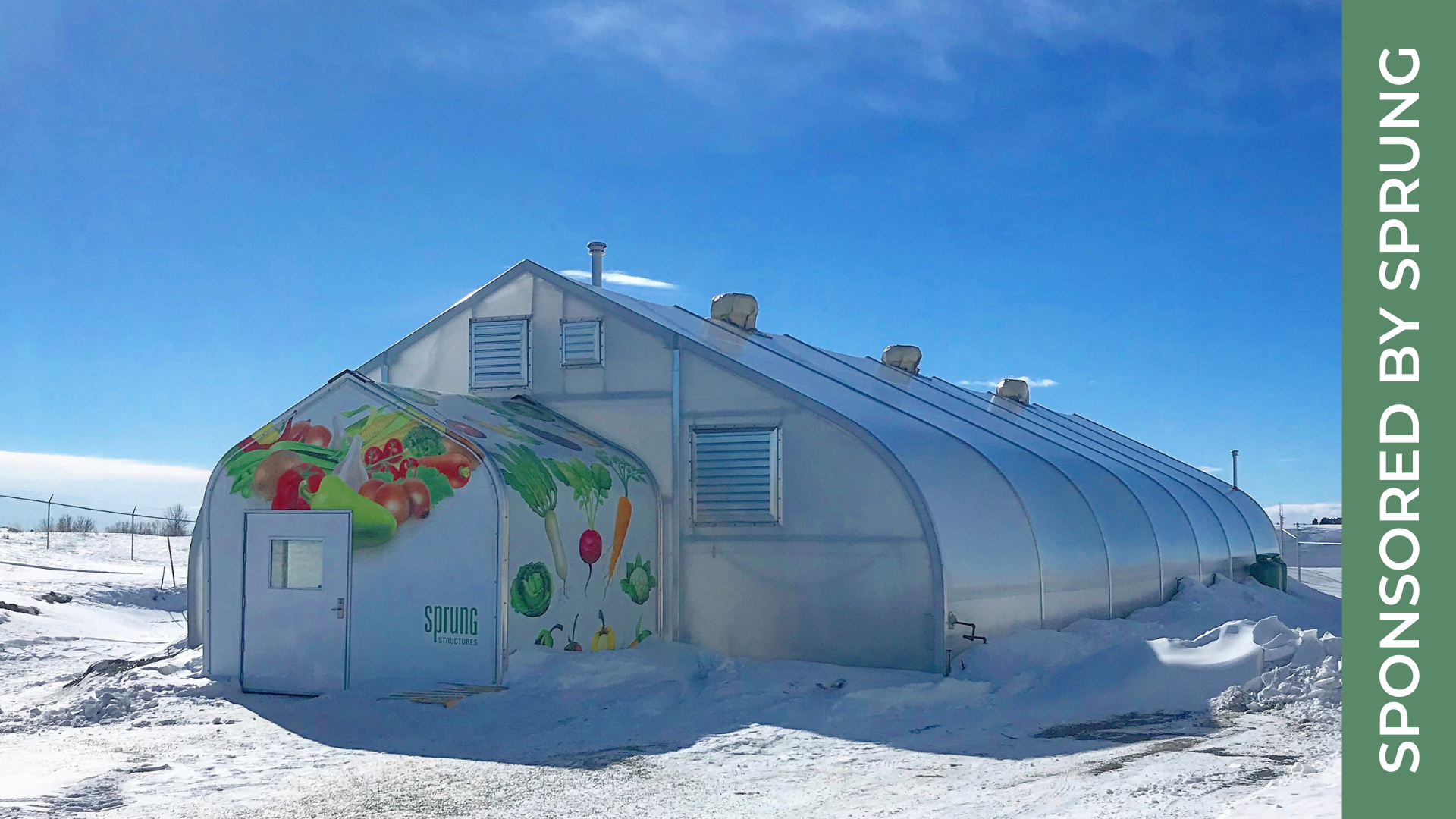Jul 19, 2021
This Company Builds Greenhouses In Some Of The World’s Most Extreme Climates
.png)
Sprung Campus Greenhouse in Calgary, Alberta; image sourced from Sprung Structures
Editor’s Note: This is the first post of a two-part series in partnership with Sprung Structures.
Agriculture in extreme climates
What do you think of farming in the Arctic or the Sahara?
While many may think of such places as uninhabitable, the reality is that millions of people worldwide live in these areas, or in other similarly extreme climates. Alongside withstanding the scorching heat, bitter cold, or sunless days, these populations are challenged by the limited means available to cultivate.
With climate change increasing the intensity and frequency of extreme weather events, regions around the world are finding that it may become even more difficult to predictably feed their residents.
So, how can we change the fate of these food-insecure populations and empower them to sustain themselves?

Sprung Campus Greenhouse in Calgary, Alberta; image sourced from Sprung Structures
A global innovator and manufacturer of tensioned membrane structures, Sprung Structures, is leading the way by creating airtight and watertight building envelopes to provide the ideal controlled environment for food production.
Family-owned since 1887, Sprung “has given entrepreneurs the fastest way to build high-performance fabric structures for any industry.” With a portfolio of 12,000+ projects in over 100 countries, their technology-backed approach is enabling farmers to forget about the challenges brought on by drought, excess rainfall, and a lack of sunlight, and focus their energy on growing more and better-tasting produce.
In understanding the needs of these climatically challenged areas, Sprung has invested their time and resources into designing greenhouses that are reconfigurable, relocatable, and built to endure extreme climates and weather events.
To confirm their ability to grow under the architectural fabric, Sprung launched their first research and development greenhouse in 1980. This enabled them to test a variety of membranes as well as color spectrums.
The Sprung Family believes that providing staff with on-site dining is one of the great benefits that relates to employee retention. As a result, this on-site greenhouse grows up to 17,000 plants, 365 days a year, for Sprung’s employees and local restaurants by integrating aquaculture, hydroponics, evaporative cooling, photovoltaics, and concentrated solar technologies that minimize heating and cooling requirements.
How are these greenhouses engineered for extreme weather conditions?
“Sprung’s structures can be designed and engineered for extreme environments including hurricane force winds, severe winter weather, and intense sunlight. ”

Grōv-Bateman Feed Production Center; image sourced from Sprung Structures
The structures meet hurricane-force wind loading, and shed snow because of the 26 degree roof slope and high slide coefficient of the membrane. During earthquakes and hail, the greenhouses remain structurally unchanged as a result of the flexibility of the membrane and aluminum frame.
The structures are code compliant to fire standards around the world, and are protected against corrosion. The aluminum substructure used is inherently corrosion-resistant, and the limited number of steel components are treated with two complementing types of zinc-based protection.
To further aid entrepreneurial endeavors, Sprung’s structures can be erected on existing earth, without any concrete foundation required. Because of the air tightness of the building envelope, air loss is virtually zero, especially with the fiberglass insulation package that dramatically enhances thermal values and climate control.
As a result, farmers are able to grow local vegetables in a more predictable, year-round controlled environment, even in the most extreme of climates. Project developers can assemble the structures quickly and with small initial investments that won’t break the bank. And, after installation, operators can reap the benefits of lower energy consumption.

Island Growers Caribbean Sprung’s greenhouse in Barbados; image sourced from Sprung Structures
Hurricane-proofed in Barbados
Alongside Alquimi Renewables and its farming operations group Island Growers Caribbean, Sprung was able to complete the construction of the first 100% climate-smart and Category 5 hurricane-resistant greenhouse in the region.
This highly specialized greenhouse system “sets a new standard for climate resilience”, is engineer-certified for up to 175-mph sustained wind loads, and is earthquake and flood proof.
The greenhouse’s customized hydroponic system delivers the highest potential crop yields whilst employing low-energy production systems and advanced water control systems to reduce the overall cost of production. This was crucial for the team because freshwater is scarce and energy costs are high in the Caribbean islands.
This first phase 5,200 square foot greenhouse is expected to expand to 75,000 square feet in the coming years, and grows only imported crops to not compete with local farmers.
What’s our takeaway?
As climate change worsens, more and more people will be living - and farming - in less predictable and more volatile conditions. Meanwhile, those already living in harsh environments will become even more vulnerable. Given this changing state of the planet, we must rapidly adapt and empower populations to be able to sustain themselves through innovative food production methods.
Sprung Structures’ greenhouse designs enable farmers to do just that. Rather than spend their time worrying about how their crops will withstand the extreme climates, farmers can stay focused on managing and optimizing their operations, in order to provide the freshest and best tasting produce to their communities.

